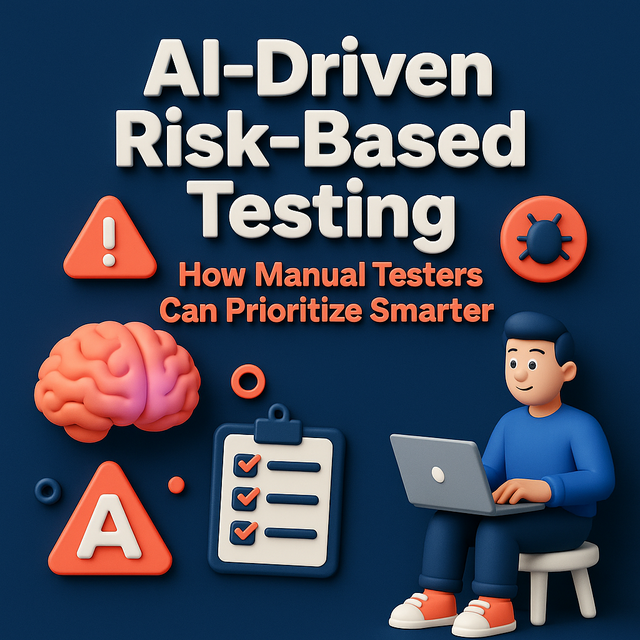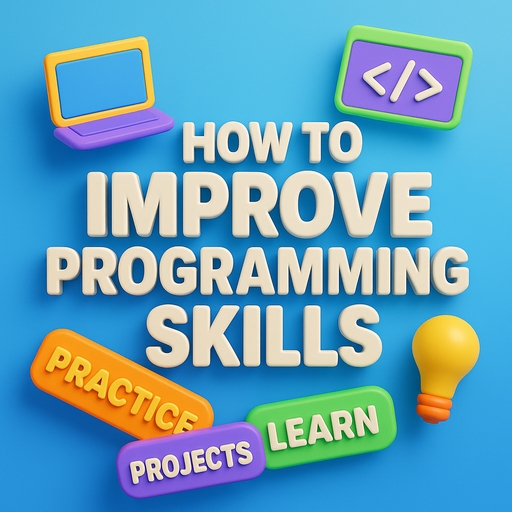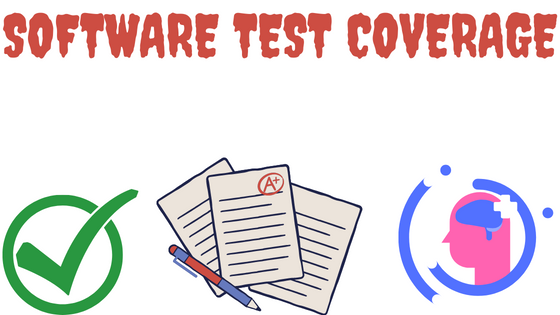Table of Contents
Introduction
AI-Driven Risk-Based Testing helps you choose what to test first, focusing on high-impact, high-likelihood areas. If you are a manual tester, AI-driven risk-based testing provides you with data for smarter prioritization. You’ve probably asked yourself at least once: “How do I know what to test first when everything feels important?”
You’ve been there:
- Endless regression suites with hundreds of cases.
- Last-minute release pressure.
- Developers swearing nothing broke.
- Stakeholders are breathing down your neck.
And yet, something slips into production.
That’s not your fault. It’s the reality of testing in fast-moving environments. But there’s a smarter way forward.
This is where AI-driven risk-based testing steps in. It doesn’t magically test for you, and it doesn’t replace your job. Instead, it becomes your copilot for smarter prioritization.
Think of it like a GPS. You can drive anywhere with a paper map, but a GPS guides you to the fastest route. Risk-based testing, powered by AI, guides you toward the riskiest and most impactful areas of the software, ensuring you don’t waste time testing irrelevant parts.
By the end of this article, you’ll know:
- What AI-driven risk-based testing is.
- How does it change the role of manual testers?
- Real-world use cases and workflows.
- Pros and cons from your perspective.
- How to start applying it today.
And most importantly: how you can use AI not to replace yourself, but to make yourself indispensable.
The Fundamentals of Risk-Based Testing
What is Risk-Based Testing?
Risk-based testing ranks features by impact and likelihood; you test the highest risk first. It is a strategy that involves testing areas that pose the highest risk to business value. Instead of trying to test everything equally, you apply risk thinking:
- Impact: How bad will it be if this part fails?
- Likelihood: How likely is it to fail based on history, complexity, or changes?
The higher the impact and likelihood, the higher the priority.
Example:
- Payment gateway: High impact + high likelihood = test first.
- “About Us” page text update: Low impact + low likelihood = test later.
Traditional Risk Prioritization in QA
Manual testers often depend on:
- Requirement reviews.
- Brainstorming with developers.
- Business stakeholder input.
- Experience with buggy areas.
This is useful but subjective. Two testers may score risks differently.
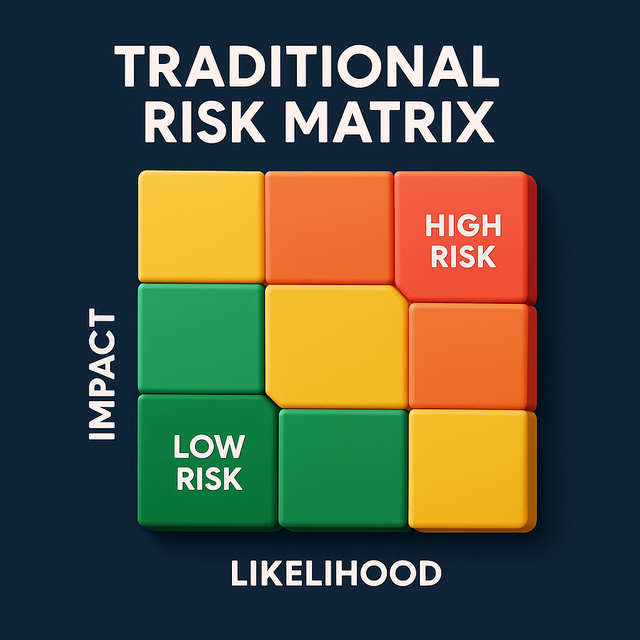
Limitations for Manual Testers
- Too much guesswork.
- Coverage gaps.
- Hard to scale when teams are large and systems are complex.
Risk-based testing is smart, but traditional RBT hits a ceiling without data-driven help.
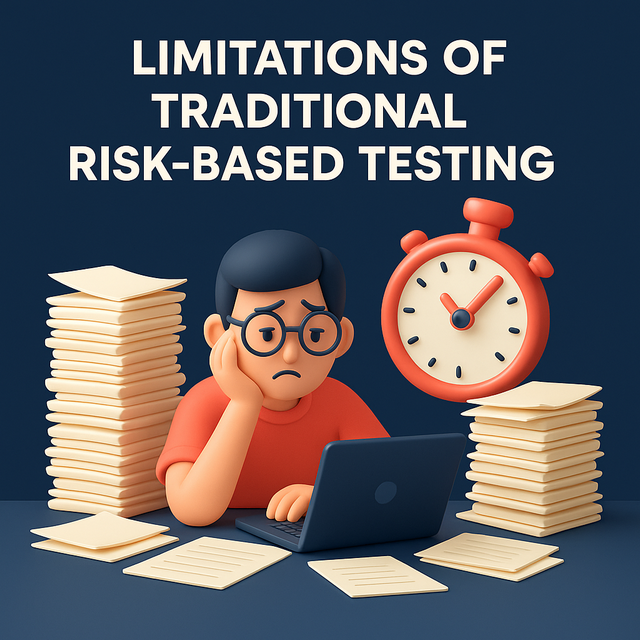
How AI Changes the Game
What AI Brings to Risk-Based Testing
AI brings data to risk-based testing, and it predicts where defects are likely. AI doesn’t get tired, doesn’t miss patterns, and can digest massive data. It:
- Learns from past defects.
- Analyzes code changes.
- Reads production logs.
- Spots user behavior trends.
Then it ranks features and test cases by risk.
Data-Driven Decision Making
Use data-driven testing prioritization to pick the next best tests. Instead of guessing, AI can say:
- “Checkout module is 3x riskier this sprint compared to last.”
- “This login function is fragile when library X updates.”
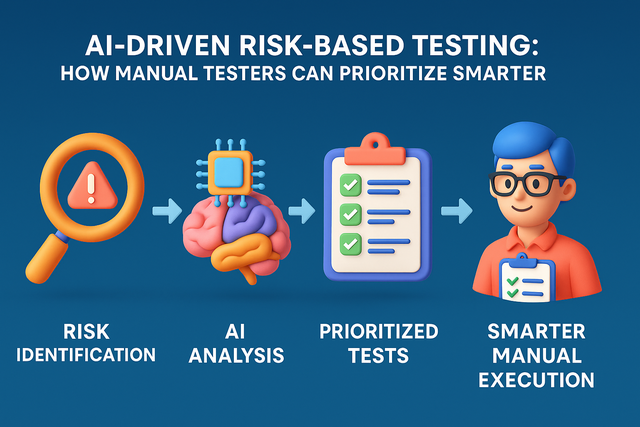
Pattern Recognition and Anomaly Detection
AI can detect:
- Defects that usually cluster in one component.
- Performance bottlenecks after specific commits.
- Risk spikes when certain developers commit large code blocks.
Predictive Analysis for Test Prioritization
AI predicts where the next defect is most likely to appear, ranking test cases accordingly. You still execute them manually, but you know where to look first.
AI doesn’t just tell you what’s broken, it predicts what’s likely to break next. That’s gold for prioritization.
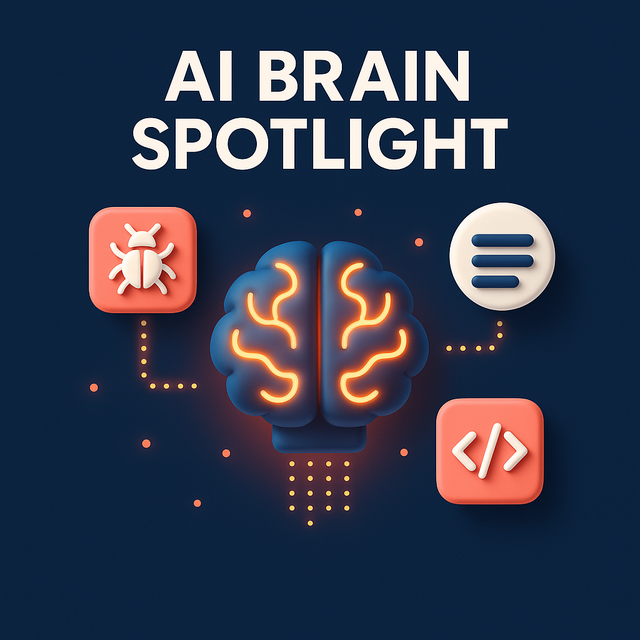
Manual Testers and Smarter Prioritization
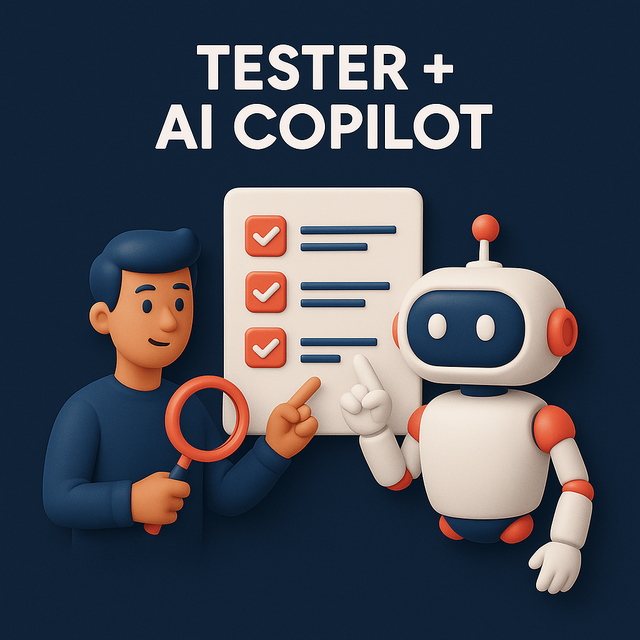
Why Manual Testers Still Matter
AI can’t:
- Think like a frustrated customer.
- Spot confusing UX.
- Feel when something “looks wrong.”
- Challenge requirements.
You, the human, bring empathy, creativity, and critical thinking.
Challenges You Face
- Too many test cases, too little time.
- Regression fatigue.
- Bugs are escaping despite hard work.
How AI Helps You
- Prioritizes high-risk areas.
- Suggests test cases.
- Summarizes results for stakeholders.
- Leaves you more time for exploratory testing.
AI as Your Copilot
AI is not your replacement. It’s your copilot. It handles heavy analysis so you can focus on judgment calls and edge cases.
AI-Driven Risk-Based Testing in Action
Example Workflow
- Developer pushes code.
- AI scans commit history and defect data.
- AI assigns risk scores to modules.
- Test cases mapped to high-risk modules float to the top.
- Manual testers focus first on these.
- AI tracks defect detection rates for feedback.
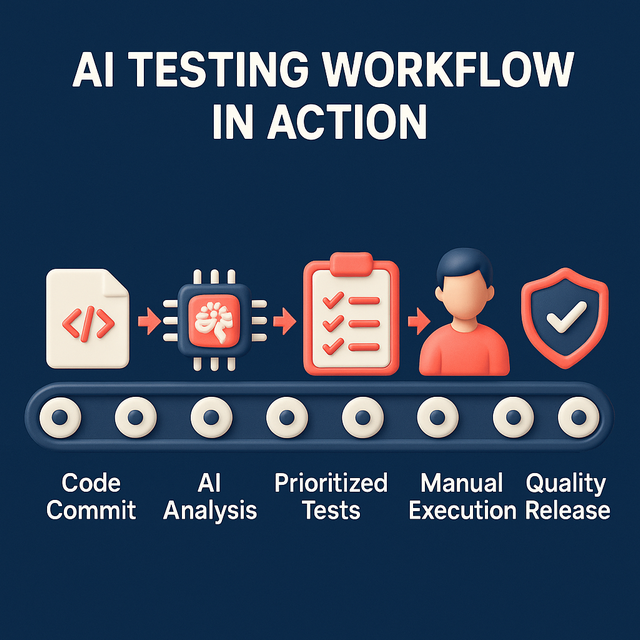
Tools You Can Explore
- Testim – AI-driven test automation and prioritization.
- Mabl – Intelligent test execution based on risk.
- Functionize – Uses ML to auto-prioritize regression tests.
- Applitools – AI-powered visual regression checks.
- ChatGPT/Custom AI – Generates test ideas and edge cases.
Case Study: E-Commerce

Black Friday release was looming. Instead of retesting everything, AI flagged checkout, discounts, and payment as the highest risk. Manual testers focused there and caught critical bugs that saved millions in potential losses.
Case Study: Banking
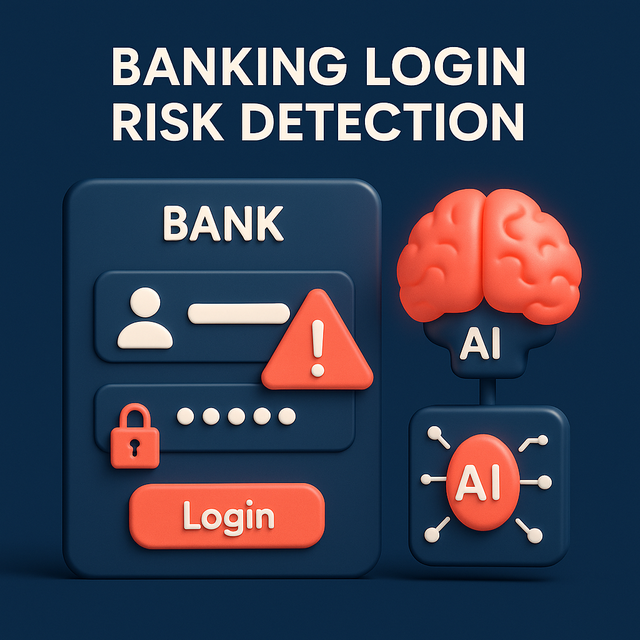
The login module was flagged as high risk after frequent password library updates. Manual testers confirmed and found issues before compliance audits.
Metrics That Improve
- Regression effort down by 40%.
- Defect leakage down by 25%.
- Increase confidence by 30%.
Benefits and Limitations
Pros from your Perspective
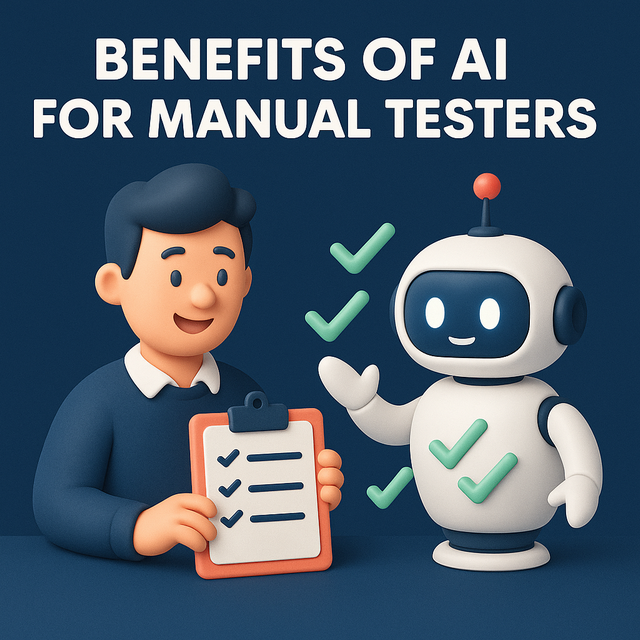
- Saves time.
- Less burnout.
- Better defect detection.
- More time for creative testing.
Cons
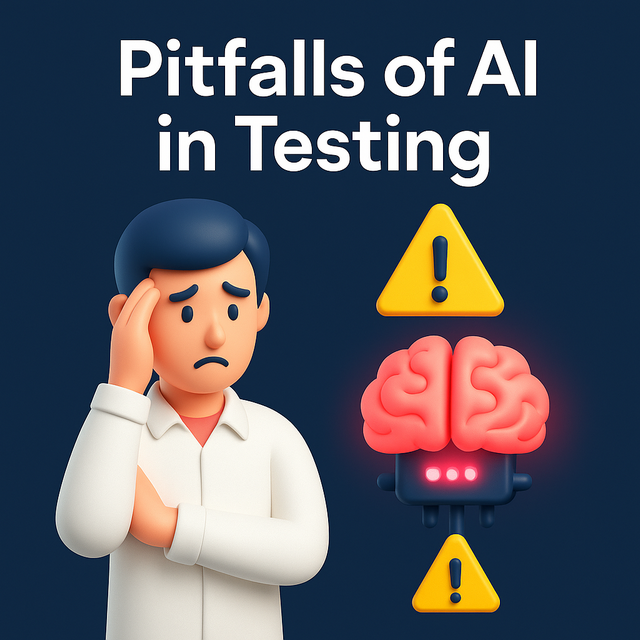
- Needs historical data.
- It may give biased results if the data is skewed.
- Requires a learning curve.
Balance
Don’t blindly trust AI. Use it as decision support, not the final judge.
Use Cases for Manual Testers
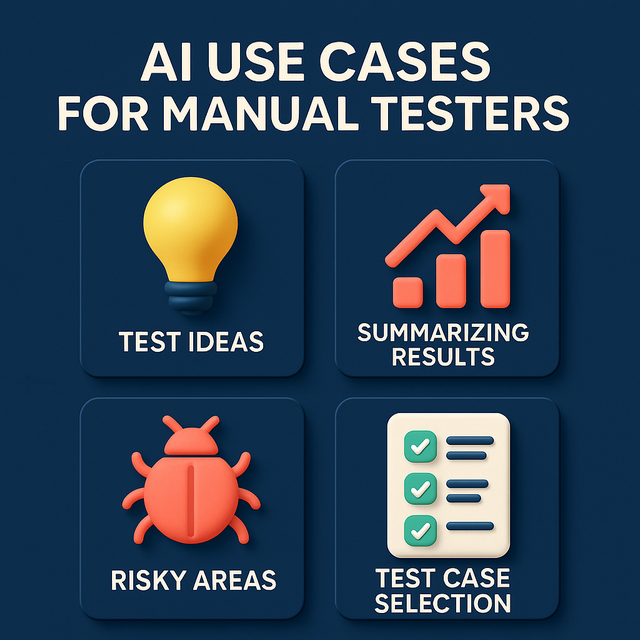
Generating Test Ideas
Prompt: “Suggest exploratory tests for a new refund workflow.”
AI gives edge cases you might miss.
Summarizing Test Results
AI can create a plain-English daily status:
“Login tested on Chrome, Firefox, Edge. 2 defects found in Safari.”
Identifying Risky Areas Faster
Instead of combing through release notes, AI highlights:
“Payment API changed, historically 70% bug-prone.”
Smarter Test Case Selection
Out of 600 regression cases, AI says:
“Run these 150 first for maximum risk coverage.”
Regression Suite Optimization
AI detects obsolete cases, wasting time.
Building Your AI-RBT Strategy
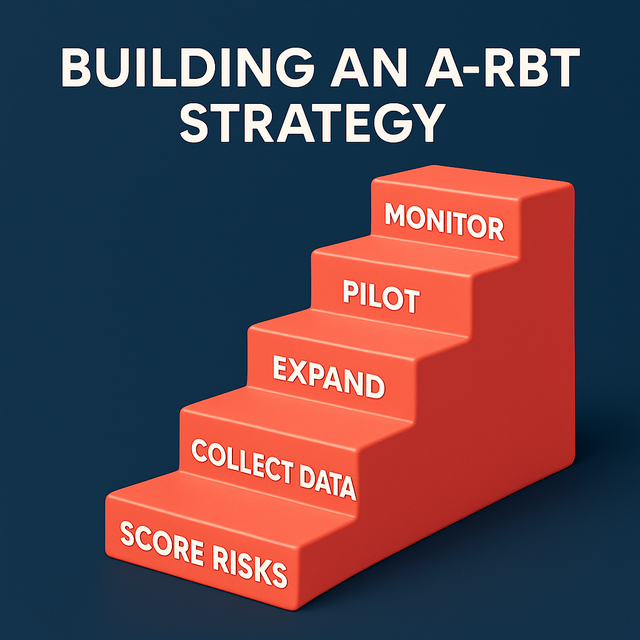
Step 1: Collect Data
Start small with:
- Past defect logs.
- Test case execution results.
- Commit history.
Step 2: Define Risk Scoring
Create a matrix with weights:
- Impact score (1–5).
- Likelihood score (1–5).
- Risk = Impact x Likelihood.
Step 3: Pilot on One Module
Pick checkout, login, or another critical area.
Step 4: Expand
After a successful pilot, scale to regression.
Step 5: Monitor & Improve
AI gets smarter the more feedback you give.
Future of Manual Testing with AI
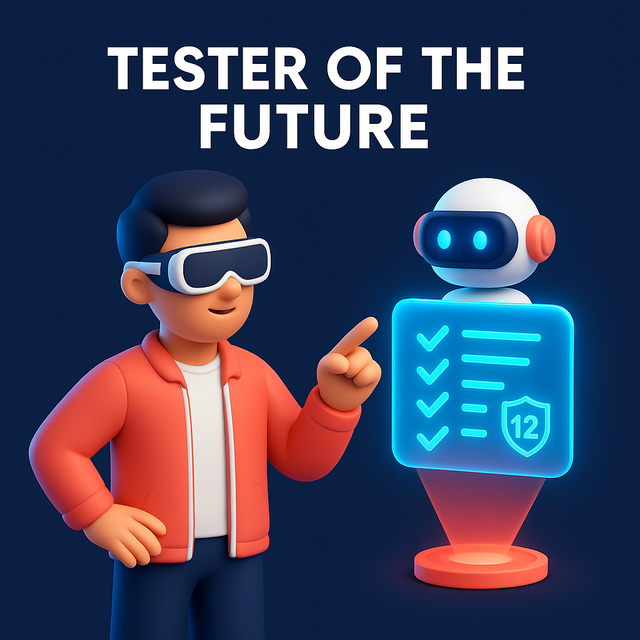
Evolving Role
You shift from executor to risk strategist.
AI + Human Collaboration
- AI crunches the data.
- You challenge the findings, explore, and validate.
Skills You Need
- Data literacy.
- Prompt engineering.
- Understanding AI bias.
Next 10 Years
- Every QA team will have AI-RBT.
- Manual testers will lead risk intelligence in projects.
Challenges and Solutions
Challenge: Data Scarcity
Solution: Start with what you have, even if small.
Challenge: AI Bias
Solution: Keep human oversight, always validate.
Challenge: Team Resistance
Solution: Pilot, show measurable wins, and gain trust.
Challenge: Cost of Tools
Solution: Start with open-source or ChatGPT-based workflows.
Step-by-Step Manual Tester Guide
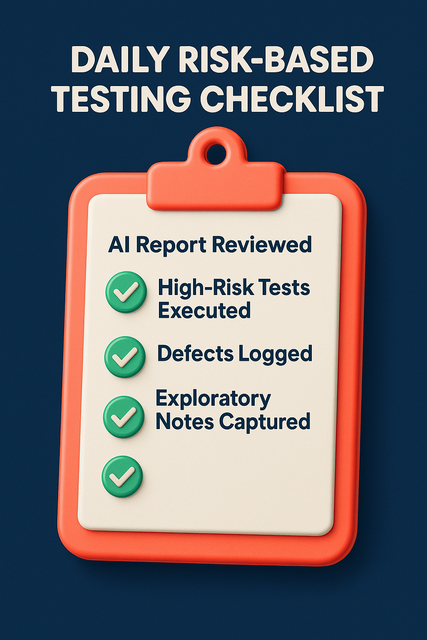
- Review the AI risk report daily.
- Pick the top 20% risky areas.
- Run those tests first.
- Do exploratory testing there.
- Share results.
Checklist Example:
- ✅ AI risk report reviewed.
- ✅ High-risk tests executed.
- ✅ Defects logged.
- ✅ Exploratory session notes captured.
Key Takeaways
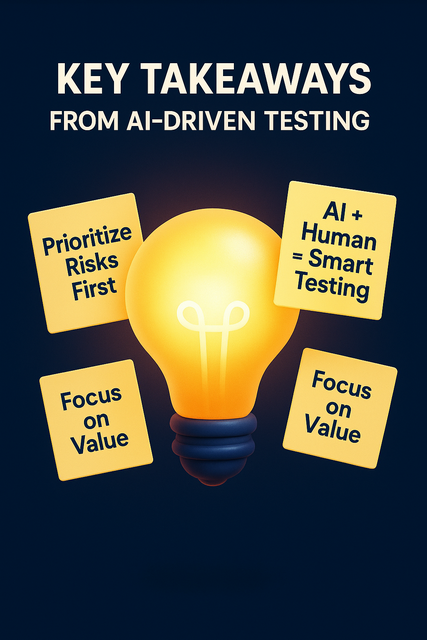
- AI-driven RBT = smarter prioritization.
- Manual testers remain essential.
- Start small, pilot, expand.
- Balance AI insight with human intuition.
Conclusion
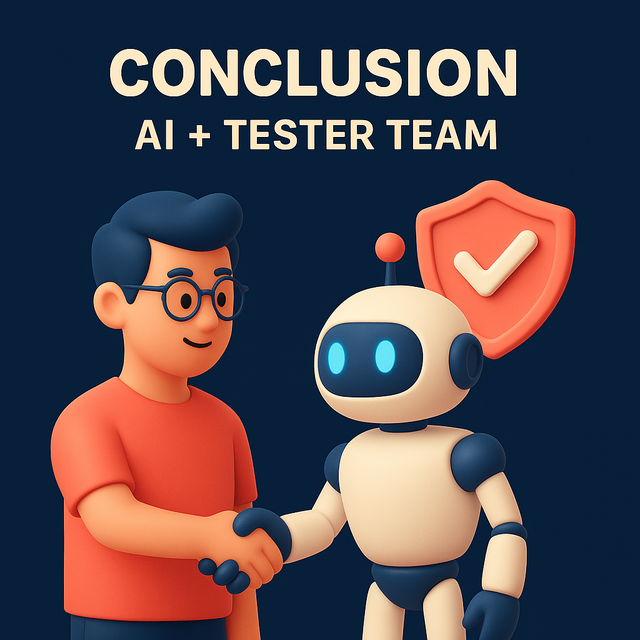
Manual testing isn’t dying. It’s evolving.
With AI-driven risk-based testing, you become a smarter, more valuable tester. Instead of drowning in endless regressions, you focus on what matters most.
AI doesn’t steal your job, it saves it.

